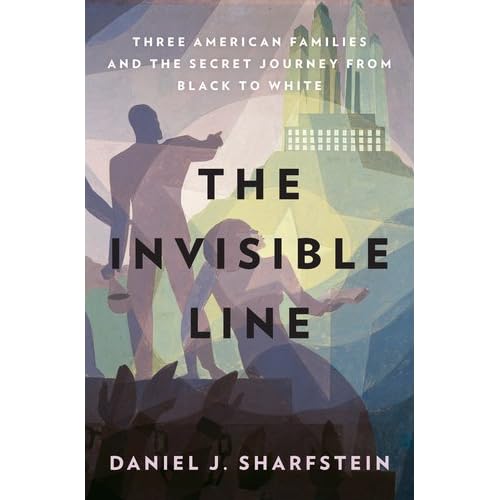
Written by Daniel Sharfstein
Penguin Group 2011
I tend to read more fiction than non-fiction, although I have been known to read a good biography. However, in the interest of full disclosure, I am a little bit of a history nerd and may have won some sort of award my senior year of high school to prove it. I saw this book featured on Goodreads as a giveaway, entered, and won a copy. Hooray for winning free books!
Professor Daniel Sharfstein of Vanderbilt University uses his book The Invisible Line to examine the lives of three families from the mid-1700s through the twentieth century. Each of these families is African-American, but passes themselves off as or is perceived as white at some point during their history.
This book starts off slowly, and it took me a while to get into it. It is sometimes confusing to keep track of which family is which, but this is easily remedied by checking the previous chapter or the family trees provided at the beginning.
The fascinating conclusion of Professor Sharfstein’s research is that the line between black and white is not as solid as we are taught in US History class. African-Americans fought on both sides during the Civil War. A little girl, despite looking white and having white ancestors back several generations, is expelled from a white elementary school. In several communities, families were as white as they behaved, or as white as their neighbors desired them to be.
“Like most Americans, they were taught to believe that the line between white and black is and always has been a natural barrier supported by science and religion and fortified by politics and law. Slavery and freedom, segregation and civil rights, whippings and lynchings, discrimination overt and subtle – the history of race in the United States had little to do with them. But all the while, a different story has been hiding in plain sight.”
The color line turns out to be a completely constructed – the same people are sometimes white and sometimes black, dependent on how they portray themselves or how their neighbors want their communities to appear. Many communities, having accepted the families as white for multiple generations, decided that exposing their neighbors was not worth upsetting the status quo.
Although this is a non-fiction book and these are historical accounts, Sharfstein writes like a novelist. His meticulous research results in fully-fleshed out characters that the readers come to care about. By focusing on three families throughout several hundred years, the reader gets both a wide view of issues of race and identity and a look at the day to day lives of people in different periods in American history.
No comments:
Post a Comment